Chemical+and+Biomolecular+Engineering
-
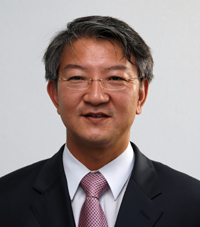 Prof. Lee Appointed to Advisory Board of the U.S. Joint BioEnergy Institute
Prof. Sang-Yup Lee of the Department of Chemical and Biomolecular Engineering, KAIST, has been appointed as a member of the scientific advisory board of the Joint BioEnergy Institute under the wing of the U.S. Department of Energy, university authorities said on Monday (Aug. 4).
The Joint BioEnergy Institute (JBEI) is a scientific partnership in the San Francisco Bay area, California, led by Lawrence Berkeley National Laboratory (Berkeley Lab). Its partner organizations include the Sandia National Laboratories, the University of California in Berkeley, UC Davis, the Carnegie Institution for Science and the Lawrence Livermore National Laboratory.
JBEI
2008.08.07 View 11634
Prof. Lee Appointed to Advisory Board of the U.S. Joint BioEnergy Institute
Prof. Sang-Yup Lee of the Department of Chemical and Biomolecular Engineering, KAIST, has been appointed as a member of the scientific advisory board of the Joint BioEnergy Institute under the wing of the U.S. Department of Energy, university authorities said on Monday (Aug. 4).
The Joint BioEnergy Institute (JBEI) is a scientific partnership in the San Francisco Bay area, California, led by Lawrence Berkeley National Laboratory (Berkeley Lab). Its partner organizations include the Sandia National Laboratories, the University of California in Berkeley, UC Davis, the Carnegie Institution for Science and the Lawrence Livermore National Laboratory.
JBEI
2008.08.07 View 11634 -
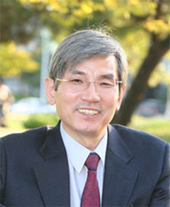 Storing Stably Hydrogen Atoms in Icy Materials Discovered
KAIST, Aug. 8, 2008 -- A KAIST research team led by Prof. Huen Lee of the Department of Chemical & Biomolecular Engineering has discovered that icy organic hydrates, which contain small cages that can trap guest molecules, can be used to create and trap hydrogen atoms at higher temperatures.
The properties and reactions of single hydrogen atoms are of great scientific interest because of their inherent quantum mechanical behavior; experimentally, they can be generated and stabilized at very low temperatures (4 K) by high-energy irradiation of solid molecular hydrogen.
The finding was reported in the journal of American Chemical Society and featured in the "Editor"s Choice" in the July 11 issue of Science as a recent research highlight.
Hydrogen is a clean and sustainable form of energy that can be used in mobile and stationary applications. Hydrogen has the potential to solve several major challenges today: depletion of fossil fuels, poor air quality, and green house gas emissions.
However, the trapping of hydrogen atoms in crystalline solid matrix has never been attempted mainly because of experimental difficulties in identifying the generated hydrogen atoms with either spectroscopic or microscopic technique.
"To overcome the barriers and limitations of the existing storage approaches, we have continuously attempted to find the new hydrogen storage media such as icy powders and other related inclusion compounds," said Prof. Lee
The discovery follows the breakthrough concept Prof. Lee"s research team proposed in Nature in 2005 to use pure ice to capture and store hydrogen molecules. At moderate temperature and pressure conditions small guest molecules are entrapped in pure ice powders to form the mixed icy hydrate materials.
"Stable existence of single hydrogen molecule/radical in icy crystalline matrices may offer significant advantages in exploring hydrogen as a quantum medium because icy hydrogen hydrates can be formed at milder conditions when compared with pure solid hydrogen, which requires the ultra low temperature of 4.2 K," said Prof. Lee.
The novel design and synthesis of ionic and radicalized icy hydrates are expected to open a new field for inclusion chemistry and ice-based science and technology. Specifically, the fact that hydrogen atoms can be stably stored in icy materials might provide versatile and practical applications to energy devices including fuel cells, ice-induced reactions, and novel energy storage process, according to the KAIST professor.
2008.08.07 View 12644
Storing Stably Hydrogen Atoms in Icy Materials Discovered
KAIST, Aug. 8, 2008 -- A KAIST research team led by Prof. Huen Lee of the Department of Chemical & Biomolecular Engineering has discovered that icy organic hydrates, which contain small cages that can trap guest molecules, can be used to create and trap hydrogen atoms at higher temperatures.
The properties and reactions of single hydrogen atoms are of great scientific interest because of their inherent quantum mechanical behavior; experimentally, they can be generated and stabilized at very low temperatures (4 K) by high-energy irradiation of solid molecular hydrogen.
The finding was reported in the journal of American Chemical Society and featured in the "Editor"s Choice" in the July 11 issue of Science as a recent research highlight.
Hydrogen is a clean and sustainable form of energy that can be used in mobile and stationary applications. Hydrogen has the potential to solve several major challenges today: depletion of fossil fuels, poor air quality, and green house gas emissions.
However, the trapping of hydrogen atoms in crystalline solid matrix has never been attempted mainly because of experimental difficulties in identifying the generated hydrogen atoms with either spectroscopic or microscopic technique.
"To overcome the barriers and limitations of the existing storage approaches, we have continuously attempted to find the new hydrogen storage media such as icy powders and other related inclusion compounds," said Prof. Lee
The discovery follows the breakthrough concept Prof. Lee"s research team proposed in Nature in 2005 to use pure ice to capture and store hydrogen molecules. At moderate temperature and pressure conditions small guest molecules are entrapped in pure ice powders to form the mixed icy hydrate materials.
"Stable existence of single hydrogen molecule/radical in icy crystalline matrices may offer significant advantages in exploring hydrogen as a quantum medium because icy hydrogen hydrates can be formed at milder conditions when compared with pure solid hydrogen, which requires the ultra low temperature of 4.2 K," said Prof. Lee.
The novel design and synthesis of ionic and radicalized icy hydrates are expected to open a new field for inclusion chemistry and ice-based science and technology. Specifically, the fact that hydrogen atoms can be stably stored in icy materials might provide versatile and practical applications to energy devices including fuel cells, ice-induced reactions, and novel energy storage process, according to the KAIST professor.
2008.08.07 View 12644 -
 KAIST Professors Article Featured as Cover Thesis of Biotechnology Journal
An article authored by a research team of Prof. Sang-yup Lee at the Department of Chemical and Biomolecular Engineering and Dr. Jin-Hwan Park at the KAIST Institute for the BioCentury has been featured as the cover thesis of the August 2008 issue of Trends in Biotechnology.
The paper, titled "General strategy for strain improvement by means of systems metabolic engineering," focuses on the application of systems biology for the development of strains and illustrates future prospects. Trends in Biotechnology, published by Cell Press, is one of the most prestigious review journals in the field.
Jin-Hwan Park, the primary author of the research thesis, said that the KAIST team"s research work was expected to provide substantial help to researchers involved in biotechnology industry.
The strategy has been established on the basis of the experiences gained in the actual microbial production process using the systems biology methods which his research team has recently worked on, Prof. Park said.
2008.07.24 View 13817
KAIST Professors Article Featured as Cover Thesis of Biotechnology Journal
An article authored by a research team of Prof. Sang-yup Lee at the Department of Chemical and Biomolecular Engineering and Dr. Jin-Hwan Park at the KAIST Institute for the BioCentury has been featured as the cover thesis of the August 2008 issue of Trends in Biotechnology.
The paper, titled "General strategy for strain improvement by means of systems metabolic engineering," focuses on the application of systems biology for the development of strains and illustrates future prospects. Trends in Biotechnology, published by Cell Press, is one of the most prestigious review journals in the field.
Jin-Hwan Park, the primary author of the research thesis, said that the KAIST team"s research work was expected to provide substantial help to researchers involved in biotechnology industry.
The strategy has been established on the basis of the experiences gained in the actual microbial production process using the systems biology methods which his research team has recently worked on, Prof. Park said.
2008.07.24 View 13817 -
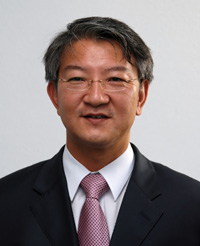 KAIST, GS Caltex Jointly Develop New Bacteria to Produce Biobutanol
KAIST and GS Caltex, Korea"s second-largest refiner, have jointly developed a new strain of bacteria to produce biobutanol, which is regarded as a promising next-generation biofuel, KAIST authorities said on Monday (June 2).
A research team led by Prof. Sang-Yup Lee of the Chemical and Biomolecular Engineering Department and researchers of GS Caltex succeeded in developing an improved strain of bacteria which enables to produce a large amount of biobutanol in the process of fermenting biomass. The research team has applied for international patent for the new technology.
Biomass refers to living and recently dead biological material that can be used as fuel or for industrial production. It usually refers to plant matter grown for use as biofuel, but it also includes plant or animal matter used for production of fibers, chemicals or heat.
In the 1970s and 1980s when scientists began researching the possibilities of alternative fuels, bacteria were used in the process of fermenting biomass. This ABE (acetone, butanol, ethanol) fermentation process yields butanol, acetone, and ethanol in a ratio of 6:3:1, respectively. Acetone produced in this process is not usable.
The newly developed technology to produce biobutanol has an advantage of lowering production cost by eliminating the process to separate acetone from butanol. This has been made possible by improving the bacteria used for the fermentation in metabolic engineering terms, and producing butanol and ethanol only in a ratio of 6:1, while curbing the generation of acetone.
In comparison with bioethanol, also a biofuel mixture which is currently under widespread use in some countries, butanol is more easily transported with gasoline and diesel through pipelines because of its lower tendency to separate from the fuel when contaminated with water. Butanol is also less corrosive than ethanol, another reason its transport through pipeline is preferable.
Global interest in full utilization of biomass and development of other alternative energy including biobutanol has deepened in recent years, as crude oil prices have skyrocketed to record levels and climate changes resulting from the excessive use of fossil fuel have been causing various problems around the world.
2008.06.04 View 11715
KAIST, GS Caltex Jointly Develop New Bacteria to Produce Biobutanol
KAIST and GS Caltex, Korea"s second-largest refiner, have jointly developed a new strain of bacteria to produce biobutanol, which is regarded as a promising next-generation biofuel, KAIST authorities said on Monday (June 2).
A research team led by Prof. Sang-Yup Lee of the Chemical and Biomolecular Engineering Department and researchers of GS Caltex succeeded in developing an improved strain of bacteria which enables to produce a large amount of biobutanol in the process of fermenting biomass. The research team has applied for international patent for the new technology.
Biomass refers to living and recently dead biological material that can be used as fuel or for industrial production. It usually refers to plant matter grown for use as biofuel, but it also includes plant or animal matter used for production of fibers, chemicals or heat.
In the 1970s and 1980s when scientists began researching the possibilities of alternative fuels, bacteria were used in the process of fermenting biomass. This ABE (acetone, butanol, ethanol) fermentation process yields butanol, acetone, and ethanol in a ratio of 6:3:1, respectively. Acetone produced in this process is not usable.
The newly developed technology to produce biobutanol has an advantage of lowering production cost by eliminating the process to separate acetone from butanol. This has been made possible by improving the bacteria used for the fermentation in metabolic engineering terms, and producing butanol and ethanol only in a ratio of 6:1, while curbing the generation of acetone.
In comparison with bioethanol, also a biofuel mixture which is currently under widespread use in some countries, butanol is more easily transported with gasoline and diesel through pipelines because of its lower tendency to separate from the fuel when contaminated with water. Butanol is also less corrosive than ethanol, another reason its transport through pipeline is preferable.
Global interest in full utilization of biomass and development of other alternative energy including biobutanol has deepened in recent years, as crude oil prices have skyrocketed to record levels and climate changes resulting from the excessive use of fossil fuel have been causing various problems around the world.
2008.06.04 View 11715 -
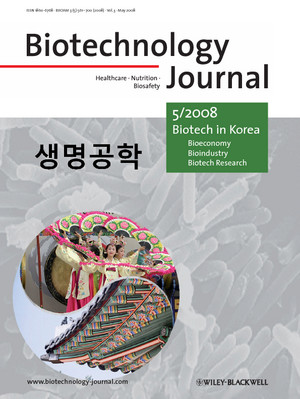 International Science Journal Spotlights Korean Biotechnology
Biotechnology Journal published by German-based Wiley-VCH, one of the world"s major scientific and technical publishers, devoted its entire special edition for May to biotechnology in Korea.
The monthly journal"s special issue was planned by KAIST Professor Sang-Yup Lee of the Chemical and Biomolecular Engineering Department who is one of the journal"s two editors-in-chief.
The special issue outlines the current status and future prospect of biotechnology in Korea, and presents five review papers and eight original papers by leading Korean biotech researchers to showcase recent developments in Korean biotechnology. Among these papers, a review by Dr. Byung-Hwan Hyeon and his colleagues describes in detail the Korean biotechnology strategies represented by "Bio-Vision 2016," and another by Dr. Ji-Hyun Kim and his collaborators presents recent progress in microbial genome projects in Korea.
In the editorial of the journal, Prof. Lee said, "Heavy industry and IT industry have been the two drivers of Korean economic growth. Korea is now considering biotechnology as its next generation growth engine."
Underscoring the growing importance of fusion research, he mentioned that integration of biotechnology with information technology and nanotechnology is advancing rapidly in Korea. Another special edition of Biotechnology Journal focusing on these exciting biotech developments in Korea is planned for the future.
2008.05.20 View 12840
International Science Journal Spotlights Korean Biotechnology
Biotechnology Journal published by German-based Wiley-VCH, one of the world"s major scientific and technical publishers, devoted its entire special edition for May to biotechnology in Korea.
The monthly journal"s special issue was planned by KAIST Professor Sang-Yup Lee of the Chemical and Biomolecular Engineering Department who is one of the journal"s two editors-in-chief.
The special issue outlines the current status and future prospect of biotechnology in Korea, and presents five review papers and eight original papers by leading Korean biotech researchers to showcase recent developments in Korean biotechnology. Among these papers, a review by Dr. Byung-Hwan Hyeon and his colleagues describes in detail the Korean biotechnology strategies represented by "Bio-Vision 2016," and another by Dr. Ji-Hyun Kim and his collaborators presents recent progress in microbial genome projects in Korea.
In the editorial of the journal, Prof. Lee said, "Heavy industry and IT industry have been the two drivers of Korean economic growth. Korea is now considering biotechnology as its next generation growth engine."
Underscoring the growing importance of fusion research, he mentioned that integration of biotechnology with information technology and nanotechnology is advancing rapidly in Korea. Another special edition of Biotechnology Journal focusing on these exciting biotech developments in Korea is planned for the future.
2008.05.20 View 12840 -
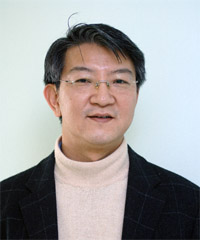 Prof. Sang-Yup Lee Co-Editor-in-Chief of Biotechnology Journal
Prof. Sang-Yup Lee of KAIST"s Department of Chemical and Biomolecular Engineering has been appointed as co-editor-in-chief of Biotechnology Journal published by Wiley-VCH, a German-based leading technical publisher, university authorities said Tuesday, April 15.
Launched in January 2006, Biotechnology Journal has covered biological process, brain ailments, biological medicine, protein design and other applied bio-sciences.
Starting in May, Lee will be responsible for setting and overseeing editorial direction of the journal along with Prof. Alois Jungbauer of Austria.
Professor Lee has been gaining recognition in and outside the country for his research on metabolic engineering. In 2002, he was chosen as one of Asia"s next generation leaders by the World Economic Forum. In 2007, Lee was elected a fellow of the American Association for the Advancement of Science, the world"s largest general scientific society. He is also serving as an editorial member of more than ten international journals including Biotechnology & Bioengineering.
Awards and honors include the First Young Scientist"s Award from the President of Korea, the Scientist of the Month Award from the Korean Ministry of Science and Technology, the Best Patent Award from Korean Intellectual Property Office, the Citation Classic Award from ISI, USA, and the First Elmer Gaden Award (1999 Best Paper Award) from Biotechnology and Bioengineering (John Wiley & Sons, USA) at the ACS National meeting.
2008.04.16 View 12808
Prof. Sang-Yup Lee Co-Editor-in-Chief of Biotechnology Journal
Prof. Sang-Yup Lee of KAIST"s Department of Chemical and Biomolecular Engineering has been appointed as co-editor-in-chief of Biotechnology Journal published by Wiley-VCH, a German-based leading technical publisher, university authorities said Tuesday, April 15.
Launched in January 2006, Biotechnology Journal has covered biological process, brain ailments, biological medicine, protein design and other applied bio-sciences.
Starting in May, Lee will be responsible for setting and overseeing editorial direction of the journal along with Prof. Alois Jungbauer of Austria.
Professor Lee has been gaining recognition in and outside the country for his research on metabolic engineering. In 2002, he was chosen as one of Asia"s next generation leaders by the World Economic Forum. In 2007, Lee was elected a fellow of the American Association for the Advancement of Science, the world"s largest general scientific society. He is also serving as an editorial member of more than ten international journals including Biotechnology & Bioengineering.
Awards and honors include the First Young Scientist"s Award from the President of Korea, the Scientist of the Month Award from the Korean Ministry of Science and Technology, the Best Patent Award from Korean Intellectual Property Office, the Citation Classic Award from ISI, USA, and the First Elmer Gaden Award (1999 Best Paper Award) from Biotechnology and Bioengineering (John Wiley & Sons, USA) at the ACS National meeting.
2008.04.16 View 12808 -
 KAIST Holds Symposium on Metabolic Engineering
The KAIST Institute for Bio-Century held a symposium on metabolic engineering at the auditorium of the KAIST"s Applied Engineering Bldg. on Thursday, Feb. 14, in cooperation with the BK21 Chemical Engineering Research Team.
The symposium focused on researches on bio-refinery program and bio-energy production in connection with steep hikes in oil prices and worsening environmental problems, including global warming.
Seven Korean experts presented their views on metabolic engineering strategies to effectively produce bio-energy and biofuel and the latest research trends.
Among the speakers, Prof. Lee Sang-yup, co-head of the KAIST Institute for Bio-Century, spoke on the theme of "Metabolic Engineering for Bio-refinery and Bio-energy.
The symposium provided an opportunity to take a glimpse into the latest research trends of metabolic engineering technology. Metabolic engineering technology is crucial to producing chemicals, energy and other substances from renewable biomass materials in a departure from heavy reliance on crude oil.
2008.02.14 View 12611
KAIST Holds Symposium on Metabolic Engineering
The KAIST Institute for Bio-Century held a symposium on metabolic engineering at the auditorium of the KAIST"s Applied Engineering Bldg. on Thursday, Feb. 14, in cooperation with the BK21 Chemical Engineering Research Team.
The symposium focused on researches on bio-refinery program and bio-energy production in connection with steep hikes in oil prices and worsening environmental problems, including global warming.
Seven Korean experts presented their views on metabolic engineering strategies to effectively produce bio-energy and biofuel and the latest research trends.
Among the speakers, Prof. Lee Sang-yup, co-head of the KAIST Institute for Bio-Century, spoke on the theme of "Metabolic Engineering for Bio-refinery and Bio-energy.
The symposium provided an opportunity to take a glimpse into the latest research trends of metabolic engineering technology. Metabolic engineering technology is crucial to producing chemicals, energy and other substances from renewable biomass materials in a departure from heavy reliance on crude oil.
2008.02.14 View 12611 -
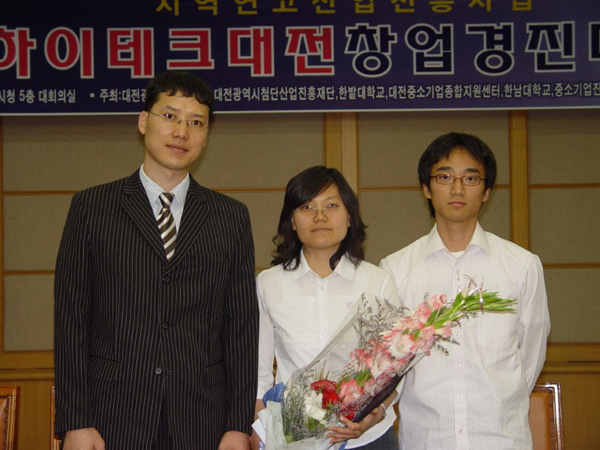 KAIST Students Wins Gold Prize at Technical Idea Contest
KAIST Students Wins Gold Prize at Technical Idea Contest
- Receive the gold prize at the 3rd High-Tech Daejeon Technical Idea Contest for Company Establishment- For the development of a new system to convert complex web page addresses to short and meaningful addresses
Sang-Hoon Kim, Song-Hwa Chae and Dong-Hun Lee of Chemical and Biomolecular Engineering won the gold prize at the prospective company establishment part in the 3rd High-Tech Daejeon Technical Idea Contest for Company Establishment on May 21 for their valuable development of ‘Web Page Address Clipping System’.
So far, simplified web page addresses include special characters, which make the addresses long and complex. That is, the current address simplification service combines meaningless random words and numerals to create addresses when web page addresses are entered. In this case, the addresses are not easy to share with others and reuse several times since they are difficult to memorize.
However, the ‘Web Page Address Clipping System’ shortens meaningless long addresses. In addition, the improved address simplification service will provide user’s own addresses, and statistics and ranking to clipping addresses frequently used.
Based on this technology, Kim and Chae are now preparing to open a company called ‘URLClip’ under the auspice of Professor Tae-Yong Yang and Researcher In-Soo Kim, KAIST Entrepreneurship Center. They are also expanding their service areas onto clipping library for individual users, host name services for enterprises, etc. and developing tool bar, RSS service (RSS is an acronym of RDF (or Rich) Site Summary. It refers to a service that automatically and easily provides frequently updated contents such as news and blogs to users), etc. to improve users’ conveniences.
URLClip (http://www.urlclip.net) is a next generation portal site, which is expected to provide a variety of individualized services based on Web Page Address Clipping Service and to be used by many enterprises as well as individual users who wish to enhance their access to useful contents.
“Chemical & Biomolecular Engineering Professor Sun-Won Park has offered lots of helps and supports, so I could decide to commercialize the developed technologies. The application of this technology to real life will allow further comfortable uses of internet to users,” Kim said.
Narae Team received the best prize last April at the 2nd Pre-Star Venture Company-Opening Contest hosted by KAIST and Hanbat Univeristy, and the technology is pending a patent application.
Inquiry:Sang-Hoon Kim, Dep. of Chemical and Biomolecular Engineering, H.P. 010-4754-9947Song-Hwa Chae, Dep. of Chemical and Biomolecular Engineering, H.P. 010-7223-9947Home page: http://www.urlclip.netEmail: urlclip@urlclip.net
2007.06.05 View 14667
KAIST Students Wins Gold Prize at Technical Idea Contest
KAIST Students Wins Gold Prize at Technical Idea Contest
- Receive the gold prize at the 3rd High-Tech Daejeon Technical Idea Contest for Company Establishment- For the development of a new system to convert complex web page addresses to short and meaningful addresses
Sang-Hoon Kim, Song-Hwa Chae and Dong-Hun Lee of Chemical and Biomolecular Engineering won the gold prize at the prospective company establishment part in the 3rd High-Tech Daejeon Technical Idea Contest for Company Establishment on May 21 for their valuable development of ‘Web Page Address Clipping System’.
So far, simplified web page addresses include special characters, which make the addresses long and complex. That is, the current address simplification service combines meaningless random words and numerals to create addresses when web page addresses are entered. In this case, the addresses are not easy to share with others and reuse several times since they are difficult to memorize.
However, the ‘Web Page Address Clipping System’ shortens meaningless long addresses. In addition, the improved address simplification service will provide user’s own addresses, and statistics and ranking to clipping addresses frequently used.
Based on this technology, Kim and Chae are now preparing to open a company called ‘URLClip’ under the auspice of Professor Tae-Yong Yang and Researcher In-Soo Kim, KAIST Entrepreneurship Center. They are also expanding their service areas onto clipping library for individual users, host name services for enterprises, etc. and developing tool bar, RSS service (RSS is an acronym of RDF (or Rich) Site Summary. It refers to a service that automatically and easily provides frequently updated contents such as news and blogs to users), etc. to improve users’ conveniences.
URLClip (http://www.urlclip.net) is a next generation portal site, which is expected to provide a variety of individualized services based on Web Page Address Clipping Service and to be used by many enterprises as well as individual users who wish to enhance their access to useful contents.
“Chemical & Biomolecular Engineering Professor Sun-Won Park has offered lots of helps and supports, so I could decide to commercialize the developed technologies. The application of this technology to real life will allow further comfortable uses of internet to users,” Kim said.
Narae Team received the best prize last April at the 2nd Pre-Star Venture Company-Opening Contest hosted by KAIST and Hanbat Univeristy, and the technology is pending a patent application.
Inquiry:Sang-Hoon Kim, Dep. of Chemical and Biomolecular Engineering, H.P. 010-4754-9947Song-Hwa Chae, Dep. of Chemical and Biomolecular Engineering, H.P. 010-7223-9947Home page: http://www.urlclip.netEmail: urlclip@urlclip.net
2007.06.05 View 14667 -
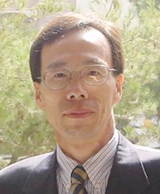 Professor Yang Named Recipient of Dupont Science & Technology Award
Professor Yang Named Recipient of Dupont Science & Technology Award
- Named as the recipient of Dupont Science & Technology Award of 2007- In recognition of his development of optical?bio-functional photonic crystal structures through Self-assembly of nanoparticles
Seung-Man Yang, a professor of Chemical and Biomolecular Engineering of KAIST (President Nam Pyo Suh) and the president of the National Creative Research Initiatives Center for Photon and Fluid Integrated Circuit by the Ministry of Science and Technology, has been named as the recipient of Dupont Science & Technology Award.
Dupont Korea, associate of Dupont, a world-class science firm, has established and conferred ‘Dupont Science & Technology Award’ since 2002 to promote basic sciences and industrial development of Korea. Dupont Science & Technology Awards are awarded to scientists of universities or state-run institutes who have made outstanding R&D achievements in the fields of Chemistry, Chemical Engineering, Material Science and Material Engineering within five years. Dupont Korea announced on May 2, 2007 that Professor Yang is the recipient of the award this year, following the strict examination by the Koran Academy of Science and Technology (KAST).
The reason for the award is Professor Yang’s development of prototype optical?bio-functional photonic crystal structures that can process a huge amount of data, resulting from a study that has discovered the principle of Self-assembly where multifunctional nanoparticles are manufactured and assembled for themselves.
Professor Yang’s recent research result about photon structures and nano patterns was published by Nature (February 2, 2006 edition); posted on Heart-Cut, the portal site of the American Chemistry Society (ACS), as highlight paper two times (November 4, 2002 and May 1, 2006); and introduced at Research/Researcher of MRS Bulletin by the U.S. Material Research Society (MRS) as main paper in December 2003. Professor Yang is very famous in Korea and abroad for the excellences of his research achievements and has made request seminars at Harvard University, University of Wisconsin, Caltech, University of California, etc. He is also invited speaker and session organizer of the MRS and the SPIE.
2007.05.08 View 17050
Professor Yang Named Recipient of Dupont Science & Technology Award
Professor Yang Named Recipient of Dupont Science & Technology Award
- Named as the recipient of Dupont Science & Technology Award of 2007- In recognition of his development of optical?bio-functional photonic crystal structures through Self-assembly of nanoparticles
Seung-Man Yang, a professor of Chemical and Biomolecular Engineering of KAIST (President Nam Pyo Suh) and the president of the National Creative Research Initiatives Center for Photon and Fluid Integrated Circuit by the Ministry of Science and Technology, has been named as the recipient of Dupont Science & Technology Award.
Dupont Korea, associate of Dupont, a world-class science firm, has established and conferred ‘Dupont Science & Technology Award’ since 2002 to promote basic sciences and industrial development of Korea. Dupont Science & Technology Awards are awarded to scientists of universities or state-run institutes who have made outstanding R&D achievements in the fields of Chemistry, Chemical Engineering, Material Science and Material Engineering within five years. Dupont Korea announced on May 2, 2007 that Professor Yang is the recipient of the award this year, following the strict examination by the Koran Academy of Science and Technology (KAST).
The reason for the award is Professor Yang’s development of prototype optical?bio-functional photonic crystal structures that can process a huge amount of data, resulting from a study that has discovered the principle of Self-assembly where multifunctional nanoparticles are manufactured and assembled for themselves.
Professor Yang’s recent research result about photon structures and nano patterns was published by Nature (February 2, 2006 edition); posted on Heart-Cut, the portal site of the American Chemistry Society (ACS), as highlight paper two times (November 4, 2002 and May 1, 2006); and introduced at Research/Researcher of MRS Bulletin by the U.S. Material Research Society (MRS) as main paper in December 2003. Professor Yang is very famous in Korea and abroad for the excellences of his research achievements and has made request seminars at Harvard University, University of Wisconsin, Caltech, University of California, etc. He is also invited speaker and session organizer of the MRS and the SPIE.
2007.05.08 View 17050 -
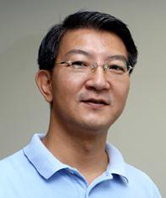 Maximum Yield Amino Acid-Producing Microorganism Developed with use of System Biotechnology
Maximum Yield Amino Acid-Producing Microorganism Developed with use of System Biotechnology
A team led by Sang-Yup Lee, a distinguished professor of Chemical and Biomolecular Engineering and chair professor of LG Chemical, has succeeded in developing maximum yield L-valine-producing microorganism by using System Biotechnology methods. The research results will be published at the April fourth week (April 23 - 27) edition of the Proceedings of the National Academy of Sciences (PNAS) of the USA.
Prof. Lee’s team has developed maximum yield amino acid-producing microorganism (target substance of L-valine, an essential amino-acid) by using microorganism E cell system and simulation methods.
His team produced initial producing microorganism by selectively operating necessary parts in colon bacillus genome and excavated preliminary target gene which is to newly be operated through transcriptome analysis using DNA chips. Then they performed a great amount of gene deletion experiment on computer by using MBEL979, E-cells of colon bacillus, and excavated secondary engineering targets. And they finally succeeded in developing maximum yield valine-producing microorganism that can extract 37.8 grams of valine from 100 grams of glucose by applying experiment results to the actual development of microorganism so as to achieve the optimization of metabolic flux in cells,
Prof. Lee said, “Since successfully used for the development of microorganism on a systematic system level, system biotechnology methods are expected to significantly contribute to the development of all biotechnology-relevant industries. At the beginning, we had huge obstacles in fusing IT and BT, but my team mates cleverly overcame such obstacles, hence I’m very proud of them.” The producing microorganism and its developing methods are pending international applications (PCT).
2007.04.26 View 13572
Maximum Yield Amino Acid-Producing Microorganism Developed with use of System Biotechnology
Maximum Yield Amino Acid-Producing Microorganism Developed with use of System Biotechnology
A team led by Sang-Yup Lee, a distinguished professor of Chemical and Biomolecular Engineering and chair professor of LG Chemical, has succeeded in developing maximum yield L-valine-producing microorganism by using System Biotechnology methods. The research results will be published at the April fourth week (April 23 - 27) edition of the Proceedings of the National Academy of Sciences (PNAS) of the USA.
Prof. Lee’s team has developed maximum yield amino acid-producing microorganism (target substance of L-valine, an essential amino-acid) by using microorganism E cell system and simulation methods.
His team produced initial producing microorganism by selectively operating necessary parts in colon bacillus genome and excavated preliminary target gene which is to newly be operated through transcriptome analysis using DNA chips. Then they performed a great amount of gene deletion experiment on computer by using MBEL979, E-cells of colon bacillus, and excavated secondary engineering targets. And they finally succeeded in developing maximum yield valine-producing microorganism that can extract 37.8 grams of valine from 100 grams of glucose by applying experiment results to the actual development of microorganism so as to achieve the optimization of metabolic flux in cells,
Prof. Lee said, “Since successfully used for the development of microorganism on a systematic system level, system biotechnology methods are expected to significantly contribute to the development of all biotechnology-relevant industries. At the beginning, we had huge obstacles in fusing IT and BT, but my team mates cleverly overcame such obstacles, hence I’m very proud of them.” The producing microorganism and its developing methods are pending international applications (PCT).
2007.04.26 View 13572 -
 KAIST Names Three Distinguished Professors
KAIST Names Three Distinguished Professors
- Three professors having achieved world’s distinguished research and education performances- Special incentives and non full-time position after retirement age to be offered
KAIST (President Nam-Pyo Suh) has named three Distinguished Professors, the most honorable positions in KAIST, for the first time in its history.
The three professors are Choong-Ki Kim, Dep. of Computer Science, Sang-Yup Lee, Dep. of Chemical and Biomolecular Engineering, and Kee-Joo Chang, Dep. of Physics.
Professor Kim has made significant contributions to the advancement of Korea’s semiconductor field. He developed and put into a practical use ‘CCD Imaging Element’, a core technology in the multimedia era and the most widely used imaging sensor, for the first time in the world. He also promoted special education programs with industrial bodies such as Samsung Electronics, Hynix Semiconductor, etc. to improve industry-academy cooperation programs of KAIST. In recent years, he is showing passionate activities for the development of KAIST, such as genius education, interdisciplinary education by the Graduate School of Culture Technology, and experiment education for undergraduate students. He received Hoam Prize in 1993 and the Order of Civil Merit Moran Medal in 1997, and is an IEEE fellow and the former Vice-president of KAIST.
Professor Lee has showed outstanding performances in the field of Metabolic Engineering. He discovered the genome sequences of bacteria for the first time in the world and published a paper regarding his discovery applied to metabolic engineering technologies at Nature Biotechnology in 2004. He also published a 78-page paper, evaluated as the bible of prteomics, at the 70 years long Microbiology and Molecular Biology Review (MMBR). His research performances are 187 domestic and international papers, 203 patent applications, Young Scientist Award, 212 invited lectures from home and abroad, etc.
Professor Chang has published about 200 papers in the field of Sold-State Physics and presented diverse theory models regarding semiconductor materials, his major research fields, at review articles, textbooks, academic conferences, etc. Particularly, he found out the essences of DX defects in GaAs semiconductors, a problem that had remained unsolved more than 10 years, and his paper on this has been cited so far more than 500 times. Professor Chang, named as one of the Nation’s Great Scholars in 2005, has 15 papers as cited more than 100 times and records the number of citation indexed by SCI at 4,847, third place among all scientists in Korea.
Distinguished Professors are the most honorable positions in KAIST, and only professors achieving world’s distinguished research and education performances can be Distinguished Professors. Being Distinguished Professors demands recommendations from President, Vice-president, Deans of College, and Department Heads and favorable evaluations by domestic and overseas professionals. Distinguished Professors will be offered special incentives and appointed as non full-time faculty even after their full retirement age.
KAIST will hire outstanding human resources in highly promising research fields through its novice systems including Distinguished Professors System, etc. to build and retain world’s best faculty.
2007.03.19 View 14368
KAIST Names Three Distinguished Professors
KAIST Names Three Distinguished Professors
- Three professors having achieved world’s distinguished research and education performances- Special incentives and non full-time position after retirement age to be offered
KAIST (President Nam-Pyo Suh) has named three Distinguished Professors, the most honorable positions in KAIST, for the first time in its history.
The three professors are Choong-Ki Kim, Dep. of Computer Science, Sang-Yup Lee, Dep. of Chemical and Biomolecular Engineering, and Kee-Joo Chang, Dep. of Physics.
Professor Kim has made significant contributions to the advancement of Korea’s semiconductor field. He developed and put into a practical use ‘CCD Imaging Element’, a core technology in the multimedia era and the most widely used imaging sensor, for the first time in the world. He also promoted special education programs with industrial bodies such as Samsung Electronics, Hynix Semiconductor, etc. to improve industry-academy cooperation programs of KAIST. In recent years, he is showing passionate activities for the development of KAIST, such as genius education, interdisciplinary education by the Graduate School of Culture Technology, and experiment education for undergraduate students. He received Hoam Prize in 1993 and the Order of Civil Merit Moran Medal in 1997, and is an IEEE fellow and the former Vice-president of KAIST.
Professor Lee has showed outstanding performances in the field of Metabolic Engineering. He discovered the genome sequences of bacteria for the first time in the world and published a paper regarding his discovery applied to metabolic engineering technologies at Nature Biotechnology in 2004. He also published a 78-page paper, evaluated as the bible of prteomics, at the 70 years long Microbiology and Molecular Biology Review (MMBR). His research performances are 187 domestic and international papers, 203 patent applications, Young Scientist Award, 212 invited lectures from home and abroad, etc.
Professor Chang has published about 200 papers in the field of Sold-State Physics and presented diverse theory models regarding semiconductor materials, his major research fields, at review articles, textbooks, academic conferences, etc. Particularly, he found out the essences of DX defects in GaAs semiconductors, a problem that had remained unsolved more than 10 years, and his paper on this has been cited so far more than 500 times. Professor Chang, named as one of the Nation’s Great Scholars in 2005, has 15 papers as cited more than 100 times and records the number of citation indexed by SCI at 4,847, third place among all scientists in Korea.
Distinguished Professors are the most honorable positions in KAIST, and only professors achieving world’s distinguished research and education performances can be Distinguished Professors. Being Distinguished Professors demands recommendations from President, Vice-president, Deans of College, and Department Heads and favorable evaluations by domestic and overseas professionals. Distinguished Professors will be offered special incentives and appointed as non full-time faculty even after their full retirement age.
KAIST will hire outstanding human resources in highly promising research fields through its novice systems including Distinguished Professors System, etc. to build and retain world’s best faculty.
2007.03.19 View 14368 -
 Best Academic Award to Prof. Huen Lee
Professor Huen Lee, Department of Chemical and Biomolecular Engineering, received the Best Prize of KAIST Academic Awards at the 36th anniversary ceremony of KAIST.
Professor Lee has published 43 international papers and 12 domestic papers for the past five years and achieved world’s distinguished academic performances such as the development of hydrogen storage technologies, the discovery of the principle on carbon dioxide-methane hydrate swapping, etc.
Professor Lee published his paper on methane hydrate at Science in 2003, and Nature introduced his paper on hydrate storage technologies as ‘highlight research’ in 2005, commenting his research as a landmark performance to pave ways for the development of future hydrogen energy. His discovery on ‘the principle of carbon dioxide-methane hydrate swapping’, published by PNAS in 2006, also gained huge attraction across the world as one of the promising technologies that can solve energy problem and global warming crisis simultaneously.
Meanwhile, the rest of the awardees of 2007 are as follows:
- Academic Award: Professor Jongkyeong Chung, Dep. of Biological SciencesAssociate professor Changok Lee, Dep. of MathematicsAssociate professor Sangkyu Kim, Dep. of ChemistryProfessor Dae-gab Gweon, Dep. of Mechanical Engineering
- Creative Lecture Award: Associate professor Jaehung Han, Dep. of Aerospace Engineering
- Excellent Lecture Award: Assistant profess Bong Gwan Jun, School of Humanities & Social Science Professor Joonho Choe, Dep. of Biological Sciences Professor Changwon Kang, Dep. of Biological Sciences Professor Seunghyup Yoo, Div. of Electrical Engineering Associate professor Otfried Cheong, Div. of Computer Science Professor Hoe Kyung Lee, Graduate School of Finance
- Contribution Award: Professor Sung Chul Shin, Dep. of Physics Professor Bowon Kim, Graduate School of Culture Technology Professor Jisoo Kim, Graduate School of Finance
- International Cooperation Best Award: Professor Hyung Suck Cho, Dep. of Mechanical Engineering
- International Cooperation Award: Professor Kunpyo Lee, Dep. of Industrial Design Professor Soon Hyung Hong, Dep. of Materials Science & Engineering Professor Sungjoo Park, Graduate School of Culture Technology
2007.03.19 View 17298
Best Academic Award to Prof. Huen Lee
Professor Huen Lee, Department of Chemical and Biomolecular Engineering, received the Best Prize of KAIST Academic Awards at the 36th anniversary ceremony of KAIST.
Professor Lee has published 43 international papers and 12 domestic papers for the past five years and achieved world’s distinguished academic performances such as the development of hydrogen storage technologies, the discovery of the principle on carbon dioxide-methane hydrate swapping, etc.
Professor Lee published his paper on methane hydrate at Science in 2003, and Nature introduced his paper on hydrate storage technologies as ‘highlight research’ in 2005, commenting his research as a landmark performance to pave ways for the development of future hydrogen energy. His discovery on ‘the principle of carbon dioxide-methane hydrate swapping’, published by PNAS in 2006, also gained huge attraction across the world as one of the promising technologies that can solve energy problem and global warming crisis simultaneously.
Meanwhile, the rest of the awardees of 2007 are as follows:
- Academic Award: Professor Jongkyeong Chung, Dep. of Biological SciencesAssociate professor Changok Lee, Dep. of MathematicsAssociate professor Sangkyu Kim, Dep. of ChemistryProfessor Dae-gab Gweon, Dep. of Mechanical Engineering
- Creative Lecture Award: Associate professor Jaehung Han, Dep. of Aerospace Engineering
- Excellent Lecture Award: Assistant profess Bong Gwan Jun, School of Humanities & Social Science Professor Joonho Choe, Dep. of Biological Sciences Professor Changwon Kang, Dep. of Biological Sciences Professor Seunghyup Yoo, Div. of Electrical Engineering Associate professor Otfried Cheong, Div. of Computer Science Professor Hoe Kyung Lee, Graduate School of Finance
- Contribution Award: Professor Sung Chul Shin, Dep. of Physics Professor Bowon Kim, Graduate School of Culture Technology Professor Jisoo Kim, Graduate School of Finance
- International Cooperation Best Award: Professor Hyung Suck Cho, Dep. of Mechanical Engineering
- International Cooperation Award: Professor Kunpyo Lee, Dep. of Industrial Design Professor Soon Hyung Hong, Dep. of Materials Science & Engineering Professor Sungjoo Park, Graduate School of Culture Technology
2007.03.19 View 17298